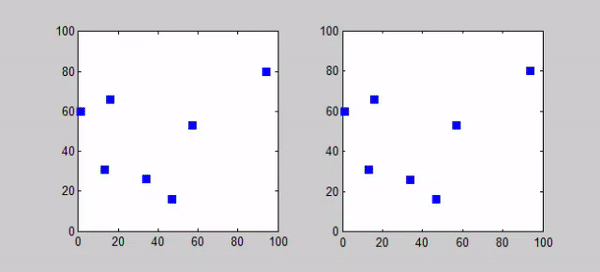Once upon a time, long before ‘data’ was the new kid on the block, our heroic sales reps wandered from outlet to outlet, armed with nothing but intuition and kaagaz-kalam. They toiled and labored, and did the best they could; and it was good enough.
Until, fast-forward to the present, it wasn’t.
Remember the new kid on the block? Well, that little kid grew so big that we literally call it ‘Big Data’ today. And now it’s a major force in the industry. This brings the real challenge – showing how Big Data can offer new insights and efficiencies that traditional methods might not capture. It’s not just about a new tool; but about changing the way we approach information and showing how it can add value to current practices in a meaningful way.
And that brings us to another real problem. How do you convince people of a solution that they don’t believe exists, simply because there actually hasn’t been a proper solution to this problem in the FMCG sector?
Until now, but more on that later.
The ‘traveling salesman’ problem, first introduced in the 1800s, remains a classic challenge for developers and mathematicians. However, in the FMCG sector, it’s not just a logistics or mathematical puzzle; it involves much more. While many view it through the lens of logistics, covering thousands of outlets with a focus on the top 10-20% that drive up to 80% of sales – is an art of balancing the complexity.

So, how do you optimize your salesmen’s time and effort to ensure that a sales rep can increase both width and depth of distribution?
This nuanced approach is where experts like FieldAssist excel, offering solutions that address the unique needs of the FMCG industry beyond traditional logistics considerations.
With heaps of data and insights at our disposal, we decided to dive headfirst into this challenge. The result? A series of home runs with implementations and scale-ups, starting from veterans like Eureka to giants like HCCB
How FieldAssist Cracked FMCG’s Oldest Puzzle
Imagine introducing a new tool to an industry used to older methods—it’s like showing someone how to use a modern tablet when they’re accustomed to a bulky old desktop computer. That’s what we’re doing with Route Planning and Route Optimization GTM. FieldAssist’s Route Optimization is designed to be a salesperson’s best partner. It boosts productivity, helps avoid inactive stores, and can lead to earning more incentives. Plus, your sales rep gets to keep all the rewards and incentives for themselves—no need to share with the technology.
It turns out, the magic behind a product’s launch—its go-to-market strategy and market perception—can be just as crucial as any fancy algorithm we cooked up. I’ll deep dive into this as we go keeping it simple but check out the attached GIF of our approach. It might spark some excitement!

Here’s an example of how seamless execution can ensure a successful implementation,
Step 1: From Set in Stone to Set for Success
Our sales reps, bless their hearts, had their beat plan set in stone, passed down like precious family heirlooms. Our task? To show them that there’s a better, faster, and more profitable way to plan their days, even if it meant proving that their “tried and true” methods might be a bit… outdated.
Ever seen a sales manager manually plan routes? Picture lots of maps, furrowed brows, and a generous sprinkle of guesswork. We highlighted the inefficiencies in this process and how we can solve them :
- Seasonal Adaptation & Target Achievement: Tailored visit frequencies improve outlet throughput.
- Dynamic Routing Updates: Weekly and daily adjustments based on previous sales data boost productive visits.
- Efficient Routing Analysis: Comparison with last month’s plans to identify and cut unnecessary travel, saving costs.

(Spoiler alert: You can increase productivity by up to 40% by simply letting machines do what they’re good at. )
Step 2: Learning from the Ground Up
Multiple field visits to capture nuances missed in Head office stakeholder meetings like
- Understanding Daily Routines: We recognized that sales reps often start their day at distributor points to plan their routes, rather than from home as previously assumed.
- Route Planning Communication: We emphasized that the new route planning isn’t about imposing strict schedules but about simplifying their daily workload. Assured them that their feedback is valued and will be incorporated to refine the solution.
- Adaptability in Route Planning: We acknowledged that order-taking routes depend on the distributor’s delivery schedules, necessitating flexibility in our planning.
Step 3 : Staying Agile – How Early Testing Drives Better Product Outcomes
Implementing complex products necessitates testing major features continuously. Don’t delay tests until development is complete – stay agile.
For instance, we needed to assess deviations between calculated displacements from latitude and longitude and actual distances traveled, including traffic impacts. To do the same we just printed the initial route engine’s results on a paper and tested the same in a real-world setting , not waiting for front end development to bear with us. This early testing provided valuable insights, guiding feature development and reducing the need for later rework.
Step 4: From Pilot to Perfection: Daily Checks and Stakeholder Engagement
- Full-Scale Implementation: Launched the first pilot in NCR and maintained daily communication with sales reps to gather feedback and perform pulse checks. Ensure they feel heard and address any doubts promptly.
- Stakeholder Engagement: Share daily reports with head office stakeholders to reinforce confidence in the product and manage the typical challenges associated with change.
- Close Monitoring: Continuously monitor the implementation to quickly identify and address any issues, ensuring the product’s effectiveness and adaptability.
And voila…
These are the IMPACT metrics from our July implementation in NCR for a renowned FMCD giant –
- Increased Visits: With improved route validation and team management, visit completion rose to approximately 85% this month, a 20% increase from 1465 visits in June to 1750 in July.
- Enhanced Visit Frequency: The average daily visits climbed from 10.1 in May to 12.1 in July, reflecting a 20% daily increase in efficiency and productivity during the pilot months.
- Sales Overachievement: The Delhi sales team surpassed their monthly target, generating ₹1.66 Cr in sales compared to the projected ₹1.52 Cr, marking a significant rise from ₹1.32 Cr in the pre-pilot phase.
- Effective Route Optimization: Streamlined routes have improved territory management, reducing Territory in Charge (TIC) from 10 to 6 and enhancing serviceability metrics, driving overall success.
With real-world accommodations like preferred day of visit, custom visit patterns, and distributor delivery schedule thrown into the mix, our solution not only plans routes; it practically predicts the future. Sales reps began to see less time on the road and more time doing what they do best—selling. Gradually, the tide turned. What began as a room full of crossed arms and regional heads telling us that we can’t plan routes that can accommodate local nuances transformed into the same guys turning into our ambassadors for scaling it up to other territories.
In the end, we found out that the answer to the ancient conundrum plaguing FMCG was merely a conceptualisation – a collection of ideas and algorithms – awaiting successful implementation.
The above journey is a reminder that with the right blend of innovation, execution, and collaboration, we can achieve greatness and transform challenges into triumphs. Success is more than just the result of a well-designed product—it’s about how we bring that product to life through meticulous execution and meaningful engagement. Every challenge faced, every insight gained, and every adjustment made was a testament to the power of teamwork and partnership. With FieldAssist as your ally, you’re not just investing in a product; you’re embracing a commitment to excellence, continuous improvement, and unparalleled support.
Here’s to building the future together, where every milestone is a shared victory.
About Post Author
Rohit Sonker
Rohit is a product manager with a passion for enterprise SaaS and the transformative power of AI in driving business success. Outside of work, he explores sports, with a keen interest in boxing, weightlifting, and adventure sports.


